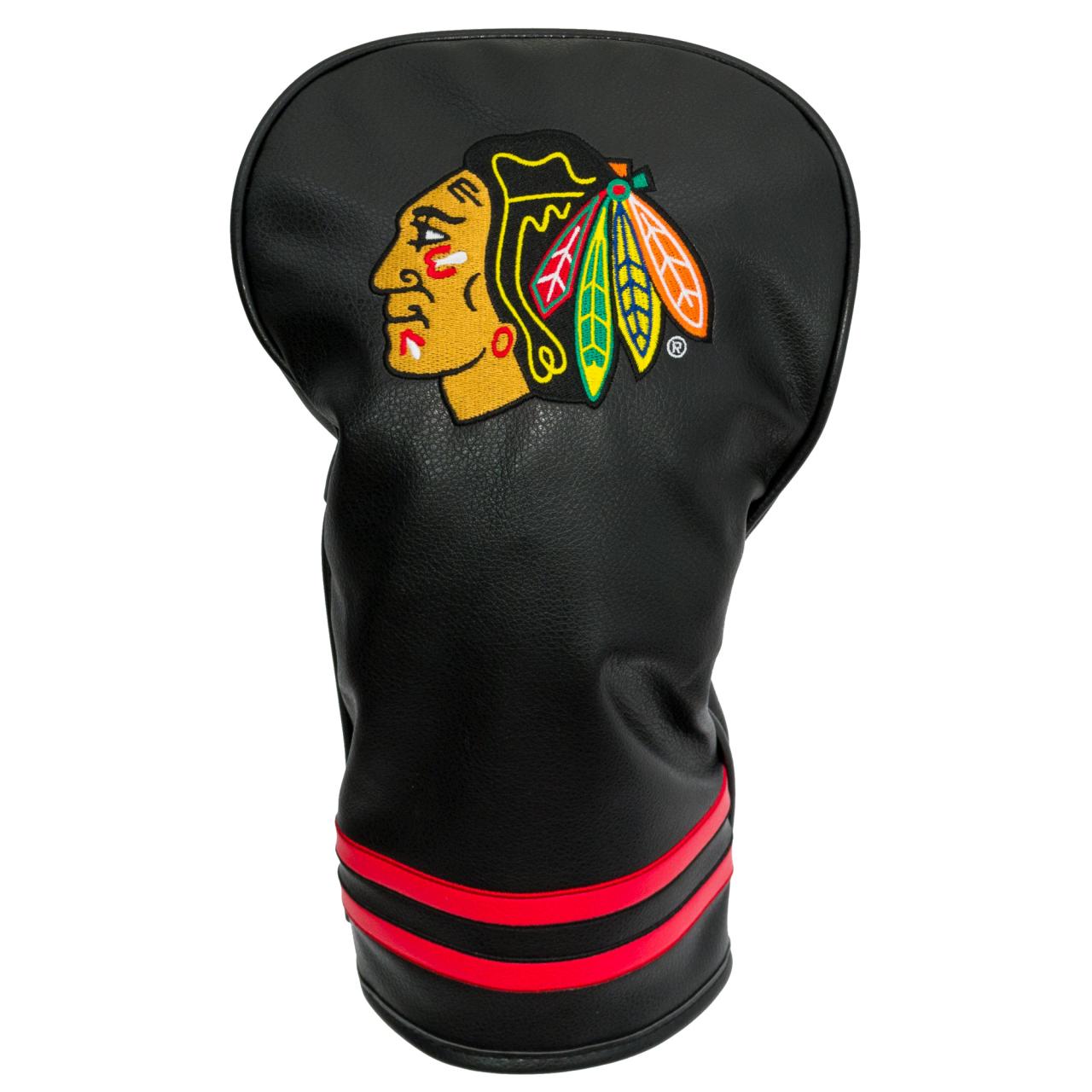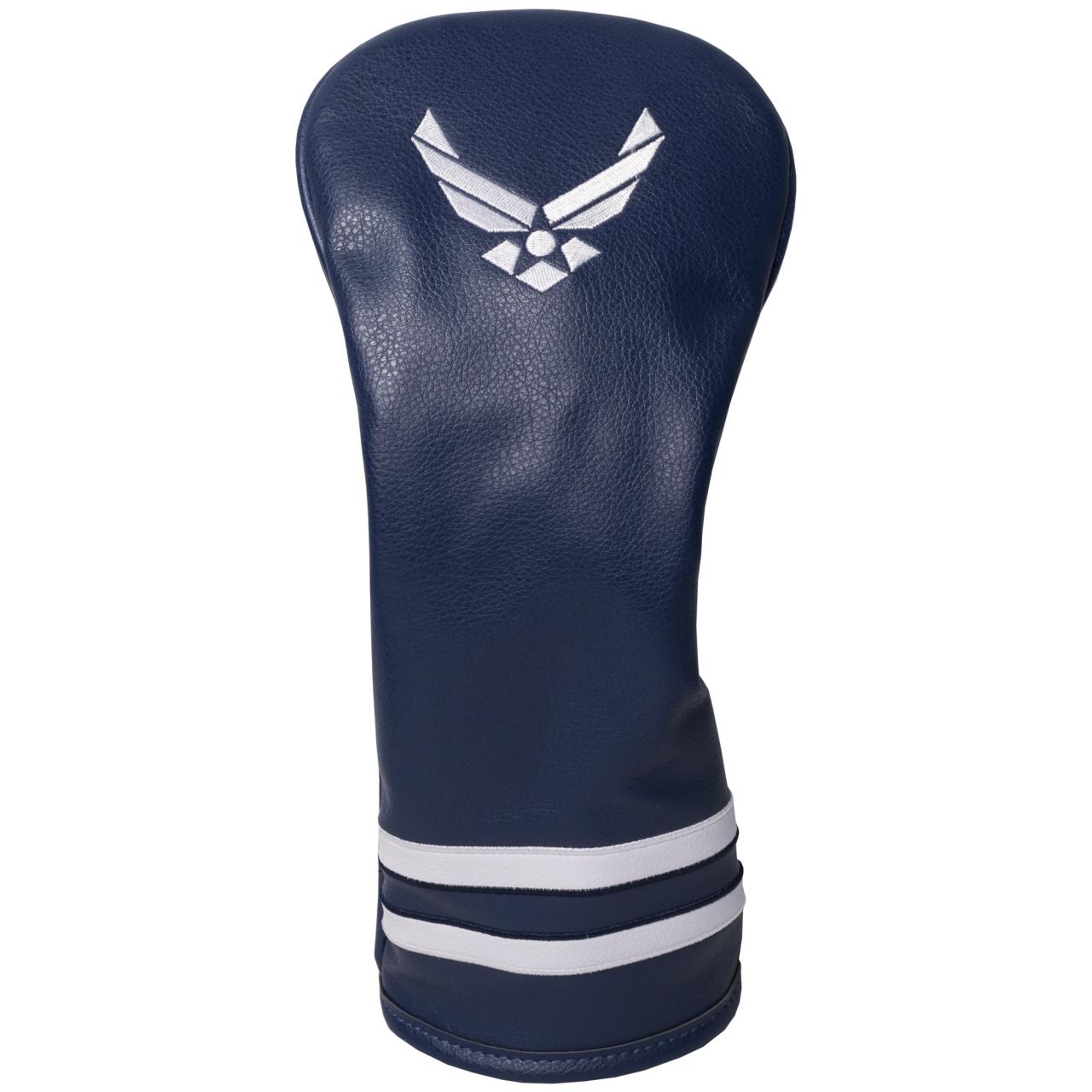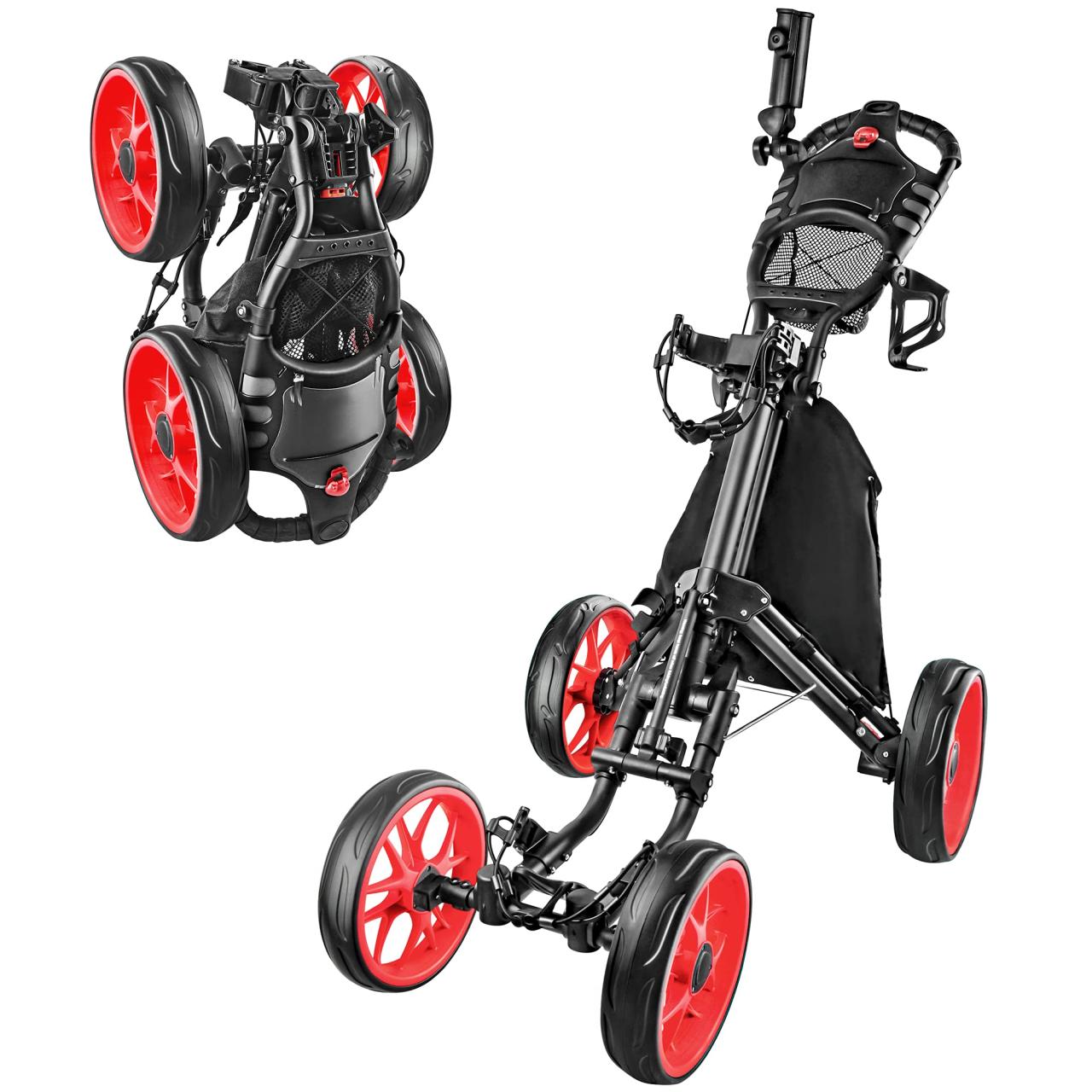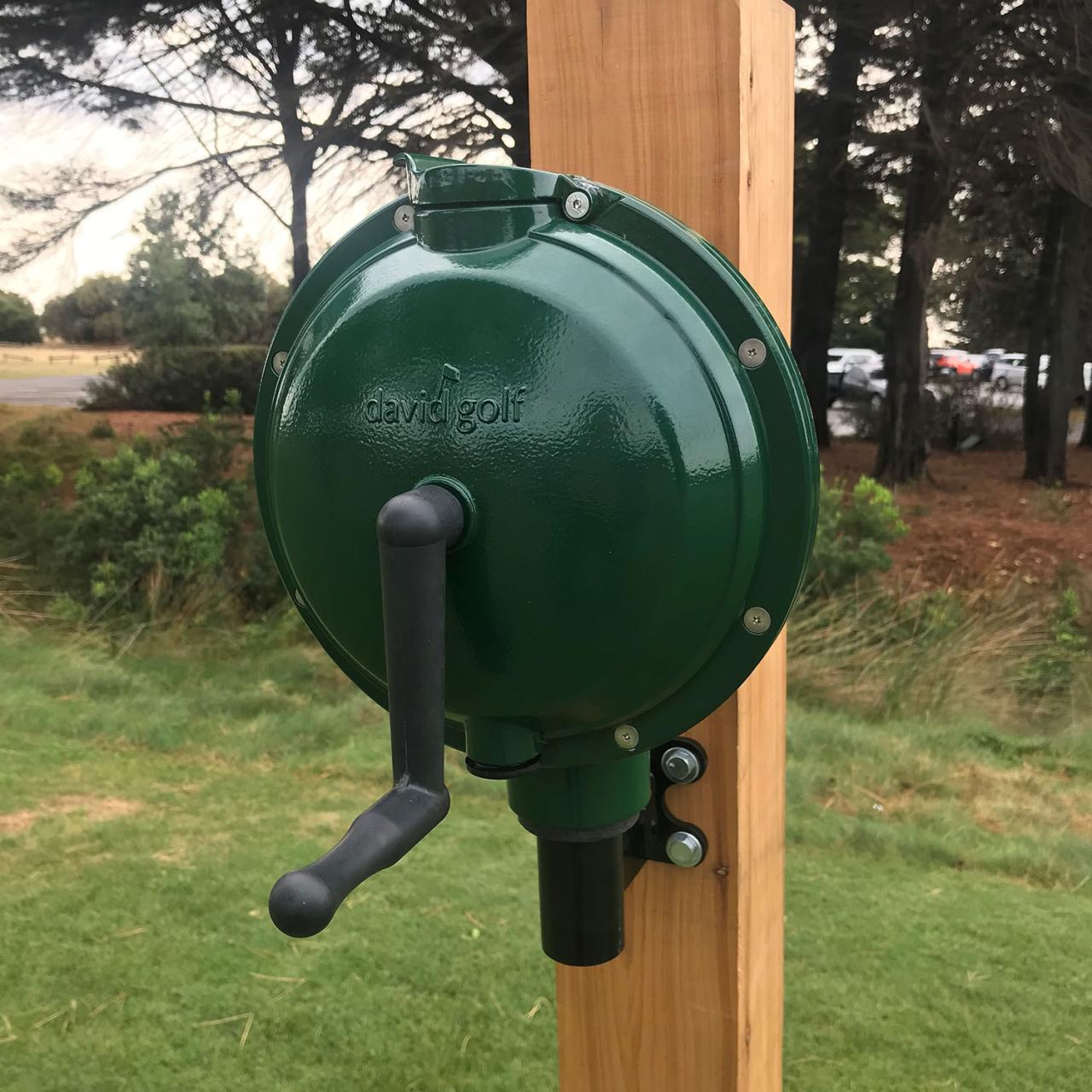Vintage golf headcovers are more than just protective coverings for clubs; they are a window into the history of the game, showcasing evolving design trends, materials, and craftsmanship. From the earliest leather headcovers to the whimsical character designs of the 20th century, these accessories offer a fascinating glimpse into the past, revealing the stories of golfers, their passions, and the evolving aesthetics of the sport.
This journey through vintage golf headcovers explores the evolution of their design, the different types of headcovers that have graced the fairways, and the factors that influence their value and appeal. We’ll delve into the materials used, the styles embraced, and the techniques employed, shedding light on the craftsmanship and artistry that went into creating these unique pieces.
History of Golf Headcovers

Golf headcovers, those protective and often decorative accessories for golf clubs, have a rich history that parallels the evolution of the game itself. From their humble beginnings as simple coverings to their modern-day status as collectible works of art, headcovers have reflected changing tastes, technological advancements, and the spirit of the sport.
Early Forms and Practicality
Early golf headcovers were primarily functional, designed to protect the clubheads from damage during transport and storage. In the early days of golf, clubs were often hand-crafted and expensive, making their protection essential. Early headcovers were typically made from materials like leather, canvas, or even old socks.
These covers were often simple in design, with minimal embellishments.
The Rise of Decorative Headcovers
As golf gained popularity in the early 20th century, headcovers began to evolve beyond their purely practical function. The introduction of new materials, such as felt and wool, allowed for more elaborate designs and embellishments.
“The 1920s and 1930s saw a surge in the use of colorful felt and wool headcovers, often adorned with intricate embroidery, club logos, and even humorous cartoons.”
These decorative headcovers became a way for golfers to express their individuality and showcase their club affiliation.
Post-World War II Innovations
Following World War II, advancements in materials and manufacturing techniques led to the development of more durable and stylish headcovers. The use of synthetic fabrics, such as nylon and polyester, made headcovers more water-resistant and easier to clean.
The Influence of Fashion and Technology
The design of golf headcovers has continued to be influenced by fashion trends and technological advancements. The 1970s saw the emergence of brightly colored and bold designs, often featuring popular characters and logos.
“The 1980s and 1990s witnessed the rise of high-tech materials and functional features, such as magnetic closures and waterproof coatings.”
The introduction of digital printing and embroidery techniques in the late 20th century further expanded the possibilities for creating unique and personalized headcovers.
Types of Vintage Golf Headcovers
Vintage golf headcovers come in a wide variety of materials, styles, and construction techniques, reflecting the evolution of golf and fashion over the decades. Understanding these variations helps collectors appreciate the history and craftsmanship behind these often-overlooked accessories.
Materials
The materials used for vintage golf headcovers provide insight into the era in which they were made.
- Leather:Leather was a popular material for headcovers, especially in the early 20th century. It was durable, water-resistant, and could be easily molded into various shapes. Leather headcovers often featured intricate stitching, embossed designs, and branding.
- Wool:Wool was another common material, particularly for headcovers made in the mid-20th century. Wool offered warmth and protection against the elements, making it ideal for colder climates. Wool headcovers often featured knitted or felted designs, sometimes with intricate patterns or club-specific motifs.
- Felt:Felt, a soft and pliable material, was often used for headcovers designed for specific clubs, such as putters. Felt headcovers could be easily shaped to fit the club head and provided a layer of protection against scratches and dents.
- Canvas:Canvas was a more utilitarian material often used for headcovers designed for practical use. Canvas headcovers were typically sturdy and durable, offering protection from dirt and moisture.
Styles
Vintage golf headcovers come in a variety of styles, each reflecting the tastes and trends of their time.
- Character Headcovers:Character headcovers, featuring animal figures, cartoon characters, or other whimsical designs, gained popularity in the mid-20th century. These headcovers often added a touch of personality to the golfer’s bag and were particularly popular with children and younger golfers.
- Club-Specific Designs:Club-specific headcovers were designed to fit specific clubs, such as drivers, woods, irons, and putters. These headcovers often featured unique designs and branding that reflected the club’s manufacturer or model. For example, a driver headcover might feature a stylized golf ball or a winged design, while a putter headcover might feature a more understated design, such as a simple leather flap or a decorative embroidery.
- Decorative Covers:Decorative headcovers were designed to add a touch of elegance and style to the golfer’s bag. These headcovers often featured intricate embroidery, leatherwork, or other embellishments. Decorative headcovers were often made from high-quality materials and were considered a status symbol among golfers.
Construction Techniques
Vintage golf headcovers were often made using traditional craftsmanship techniques.
- Hand-Stitching:Hand-stitching was a common method for constructing leather headcovers, ensuring durability and a high level of craftsmanship. The intricate stitching patterns and precise seams added to the beauty and value of these headcovers.
- Embroidery:Embroidery was often used to add decorative details to headcovers, particularly those made from wool or canvas. Intricate patterns, club logos, or even personalized monograms were often incorporated into the design, adding a unique touch to the headcover.
- Leatherwork:Leatherwork techniques, such as tooling and embossing, were used to create intricate designs and patterns on leather headcovers. These techniques added a touch of artistry and sophistication to the headcover, making it a unique and collectible item.
Collecting Vintage Golf Headcovers
Collecting vintage golf headcovers is a rewarding and increasingly popular hobby, offering a unique blend of history, aesthetics, and sentimentality. These small, often overlooked items tell stories about the evolution of golf and the people who played it.
The Appeal of Collecting Vintage Golf Headcovers
Collectors are drawn to vintage golf headcovers for various reasons, including their historical value, aesthetic appeal, and sentimental value.
- Historical Value: Vintage golf headcovers offer a glimpse into the past, providing insight into the styles, materials, and craftsmanship of bygone eras. For example, early headcovers made of leather or felt, often adorned with simple embroidery or branding, reflect the era’s manufacturing techniques and design trends.
These items serve as tangible reminders of the sport’s evolution, capturing the essence of specific periods in golf history.
- Aesthetic Appeal: Vintage golf headcovers often boast unique and eye-catching designs, ranging from simple and functional to elaborate and whimsical. Some collectors are drawn to the classic elegance of leather headcovers, while others appreciate the vibrant colors and bold patterns of vintage fabric designs.
The diversity of materials, textures, and patterns makes collecting vintage headcovers a visually stimulating experience.
- Sentimental Value: For many collectors, vintage golf headcovers hold sentimental value, often representing a connection to a loved one, a memorable golf trip, or a cherished moment in their golfing journey. These items evoke nostalgic feelings and personal memories, making them more than just collectibles; they become cherished keepsakes.
Resources for Collectors
Collectors have various resources available to them, including online forums, auction sites, and vintage golf shops.
- Online Forums: Dedicated online forums provide a platform for collectors to connect, share their knowledge, and seek advice. These forums are excellent resources for identifying rare or valuable headcovers, learning about different brands and styles, and getting insights into the current market.
Some popular online forums include the “Golf Headcover Collectors Forum” and the “Vintage Golf Headcover Club”.
- Auction Sites: Auction sites like eBay and Heritage Auctions offer a vast selection of vintage golf headcovers, ranging from common items to rare finds. Collectors can browse through listings, compare prices, and bid on items that pique their interest.
While auction sites can be competitive, they often present opportunities to acquire rare and valuable headcovers.
- Vintage Golf Shops: Specialized vintage golf shops offer curated collections of vintage golf equipment, including headcovers. These shops often have knowledgeable staff who can guide collectors through their inventory and provide information about the history and value of specific items.
Visiting vintage golf shops can be a rewarding experience, allowing collectors to see and touch these items in person.
Evaluating Vintage Golf Headcovers
Evaluating the value and condition of vintage golf headcovers requires careful consideration of various factors.
- Brand and Model: The brand and model of the headcover play a significant role in its value. Rare or highly sought-after brands, such as MacGregor, Spalding, or Wilson, command higher prices than more common brands. Similarly, headcovers from iconic golf courses or tournaments, such as Augusta National or the Masters Tournament, are highly collectible.
- Condition: The condition of the headcover is crucial in determining its value. Well-preserved headcovers, with minimal wear and tear, are generally more valuable than those showing signs of age or damage. Factors to consider include the integrity of the materials, the presence of rips or tears, and the condition of any embroidery or branding.
- Rarity: Rare or limited-edition headcovers are highly sought after by collectors. Headcovers produced in small quantities, for specific events or anniversaries, are often more valuable than those mass-produced. Collectors can research the history of specific brands and models to determine their rarity and potential value.
- Originality: Original headcovers, those that have not been restored or altered, are generally more valuable than those that have been repaired or modified. Collectors should carefully inspect headcovers for signs of restoration or alterations, such as new stitching, replacement materials, or altered branding.
Restoring and Preserving Vintage Golf Headcovers
Restoring and preserving vintage golf headcovers is a delicate art that requires a combination of knowledge, patience, and respect for the history embedded within these objects. The goal is to maintain the headcover’s authenticity while enhancing its visual appeal and prolonging its lifespan.
Cleaning Techniques
Cleaning vintage golf headcovers requires a gentle approach to avoid damaging delicate materials or fading colors. A light dusting with a soft brush or a vacuum cleaner with a soft brush attachment can remove surface dust and debris. For more stubborn stains, a mild soap solution can be used, but it’s essential to test it on an inconspicuous area first.
Avoid harsh chemicals or abrasive cleaners, as they can damage the headcover’s fabric or leather.
Repair Methods
Vintage golf headcovers often require repairs to address tears, rips, or loose stitching. For minor tears, a needle and thread can be used to mend the fabric. For larger tears or rips, a patch can be applied using a fabric adhesive or a sewing machine.
Loose stitching can be reinforced by hand or with a sewing machine. When working with leather, use a leather repair kit designed for the specific type of leather.
Storage Tips
Proper storage is crucial for preserving vintage golf headcovers. Store them in a cool, dry place, away from direct sunlight and moisture. Avoid storing them in attics or basements, where temperatures and humidity can fluctuate. Use acid-free tissue paper or acid-free cotton to wrap individual headcovers, preventing them from rubbing against each other and causing damage.
Consider using a display case or a storage box lined with acid-free tissue paper to protect them from dust and other elements.
Ethical Considerations
Restoring vintage golf headcovers raises ethical considerations. The goal should be to enhance the headcover’s appearance and prolong its life while preserving its historical significance. Avoid altering the headcover’s original design or adding unnecessary embellishments. If the headcover has been heavily damaged, it may be better to leave it as is, as any attempt to restore it could compromise its authenticity.
The most important aspect is to respect the headcover’s history and its place within the world of golf.
Vintage Golf Headcovers in Modern Golf

The resurgence of vintage golf headcovers in modern golf is a testament to their enduring appeal, blending nostalgia with a unique fashion statement. From collectors’ items to coveted accessories, these headcovers have found a new lease on life on the fairways and beyond.
Vintage Golf Headcovers as Fashion Accessories
The use of vintage golf headcovers as fashion accessories reflects a growing trend in the golf world. Many modern golfers see these headcovers as a way to express their personal style and connect with the rich history of the game.
- Unique Designs and Patterns:Vintage headcovers often feature intricate designs and patterns, adding a touch of personality and individuality to a golfer’s bag.
- Nostalgia and Heritage:Vintage headcovers evoke a sense of nostalgia and heritage, allowing golfers to connect with the past and pay homage to the game’s roots.
- Conversation Starters:These headcovers often spark conversations and generate interest among fellow golfers, leading to a shared appreciation for the history and artistry of the game.
Vintage Golf Headcovers as Collectors’ Items
Vintage golf headcovers have become highly sought-after collectors’ items, with certain designs and brands commanding significant value. The value of a vintage headcover is influenced by several factors, including:
- Rarity and Condition:Rare and well-preserved headcovers are highly prized among collectors, often fetching substantial prices.
- Brand and Design:Headcovers from prestigious brands or featuring iconic designs are highly sought after, especially if they are associated with legendary golfers or tournaments.
- Historical Significance:Headcovers with a strong historical connection, such as those used by famous golfers or from significant tournaments, can be extremely valuable.
Vintage Golf Headcovers as Unique Gifts
Vintage golf headcovers make unique and thoughtful gifts for golf enthusiasts, offering a combination of practicality and sentimental value.
- Personalized Gifts:Vintage headcovers can be personalized with the recipient’s name or initials, adding a special touch to the gift.
- Collectible Gifts:Vintage headcovers can be a cherished gift for collectors, allowing them to expand their collection and acquire a piece of golf history.
- Nostalgic Gifts:Vintage headcovers can evoke memories and nostalgia for seasoned golfers, serving as a reminder of their passion for the game.
Influence of Vintage Designs on Contemporary Headcover Designs
Vintage golf headcover designs have had a significant influence on contemporary headcover designs, inspiring modern manufacturers to incorporate elements of classic style into their products.
- Retro-Inspired Designs:Many modern headcover manufacturers have released collections inspired by vintage designs, featuring retro colors, patterns, and materials.
- Nostalgia and Heritage:Contemporary headcovers often incorporate elements of nostalgia and heritage, such as vintage logos, fonts, and color palettes.
- Fusion of Classic and Modern:Modern designers are blending classic and modern elements, creating headcovers that are both stylish and functional.
Modern Golfers Who Use Vintage Golf Headcovers
Several prominent modern golfers are known for their use of vintage golf headcovers, including:
- Tiger Woods:Woods has been seen using a vintage “Tiger” headcover from his early career, a nod to his iconic status in the sport.
- Rory McIlroy:McIlroy has been known to use vintage headcovers featuring the logos of his sponsors, adding a touch of classic style to his bag.
- Brooks Koepka:Koepka has been seen using vintage headcovers with bold designs and patterns, reflecting his bold and confident personality.
Helpful Answers
What makes vintage golf headcovers valuable?
The value of vintage golf headcovers is determined by factors like their age, condition, rarity, brand, and historical significance. Headcovers made by renowned brands, those featuring unique designs, or those associated with famous golfers often command higher prices.
Where can I find vintage golf headcovers?
Vintage golf headcovers can be found at online auction sites like eBay and specialized vintage golf shops. Antique stores, flea markets, and estate sales are also good places to search.
How do I care for my vintage golf headcovers?
To preserve vintage golf headcovers, it’s essential to handle them with care. Avoid exposing them to direct sunlight or extreme temperatures. Dust them regularly with a soft cloth and use a mild cleaner for any stains. If necessary, professional restoration services can help address significant damage.

